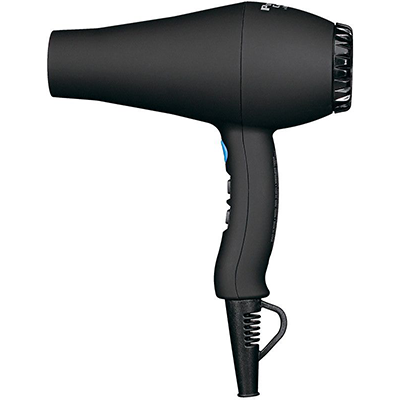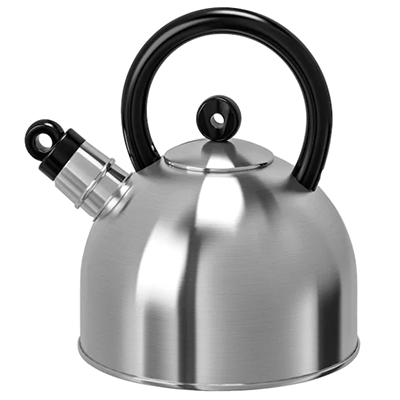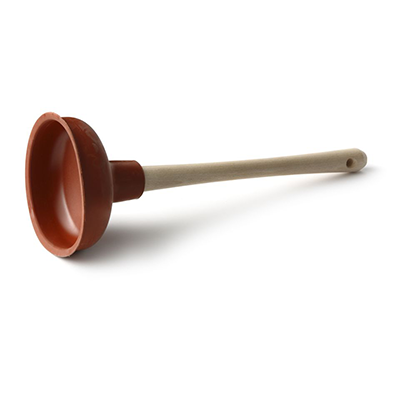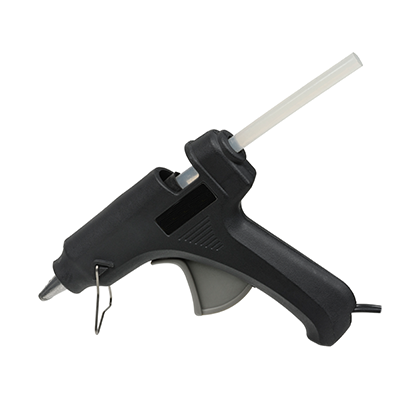Myths and Facts of DIY Car Dent Removal
Nicky Bentley 5th December 2019
It’s not uncommon to consult Google when you find yourself navigating uncharted waters like DIY car dent removal . If you’ve done some online research, you’ll have come across some car dent removal tactics that seem fairly logical, while other dent removal tactics will seem downright bizarre.
We’ve put some of the internet’s top recommended dent removal strategies to the test and are going to myth-bust a few car dent removal suggestions for you.
DIY Method #1 Car dent removal with a hair dryer

How does this remove dents?:
First you must remove the part of the car that’s dented so you can access both sides of the damaged part. Then you will need to heat up the dented part with your hair dryer, keeping a distance of about 10cm. You’ll also need to heat the dented area gently and ensure that your hair dryer isn’t set to max heat, as you will be at risk of car paint damage.
Once the material is flexible enough to bend, use protective gloves to gently push the dent back into place from the other side of the car part. Alternatively, you can use cold compressed air or dry ice to cool the heated area until it pops back into its natural shape.
Does it actually work?
Not quite! There are four reasons why this technique is too risky to try:
DO NOT ATTEMPT
DIY Method #2: Car dent removal with boiling water

How does this remove dents?:
Similar to the hair dryer method, the boiling water tactic requires the car dent to be accessible from both sides, so the part – usually a plastic bumper – needs to be dismantled.
Next, you will need to carefully pour boiling water over the plastic surface. Make sure to keep on pouring the water until the plastic softens and you are able to bend the car dent back into place. Finally, you need to pour cold water on the bumper to set the new fixed shape.
Does it actually work?
Not quite! Here’s a few reason why this is risky to try:
DO NOT TRY THIS AT HOME
DIY Method #3: Car dent removal with a plunger
Normally man’s best friend when it comes to unclogging the toilet, plungers are apparently also the next best thing when it comes to fixing car dents…or so they say.

How does this remove dents?:
This method requires heating the dented part of your car with boiling water and then placing the plunger suction cup over the dent and pulling to pop the dent back into place.
Does it actually work?
We’re pretty sure that you’re shaking your head at this one. There a several reasons why this method doesn’t work:
DO NOT ATTEMPT
DIY Method #4: Car dent removal with a glue gun
Lastly there is a field of thought that smaller dent damage such as hail damage and small stones can easily be removed with a glue and hot air gun.

How does this remove dents?:
Unlike the previous tactics that we found, you do not have to remove the car part to attempt this strategy. Instead, you use hot glue to secure a large pin in the centre of the dent and once the glue has set, pull it back using a dent puller or lifter.
After you have restored the dent back to its original state, use the hot air gun to remove the pin and glue or use rubbing alcohol and a plastic scraper. Occasionally what’s called ‘high spots’ can be created when pulling the dent, these will need to be gently hammered down using a dent hammer and plastics tap down tool.
Does it actually work?
Technically, yes. However, we strongly advise leaving this method to the professionals. Special dent removal tools and panel beater expertise is required as a lot can go wrong with this method. There is a chance that the glue can damage your car’s paint job or leave a permanent mark. You may also pull too hard and dent your car in an inverse manner! Ultimately you will end up spending more money getting the tools you need then on the repair itself.
DingGo’s recommendation
Only attempt if you are an experienced paintless dent removal (PDR) professional!
If you are keen to understand the tools these professional use, there are certainly special tools designed for car dent removal. These tools can include:
DingGo’s Summary Recommendations for Dent Removal
Leave it to the professionals.
Did you know that having small dents removed doesn’t have to cost you an arm and a leg? With DingGo’s extensive range of verified car dent removal and paintless dent removal specialists, you’ll be able to explore a multitude of affordable options from local and mobile panel beaters, without sacrificing on quality!
Log on to www.DingGo.com.au and provide 3 clear pictures of the dent and our team of experts will connect you with the right panel beater for the job that’s local to you, all in less than 48 hours. And if it’s possible, we will recommend a paintless dent removal (PDR) specialist, who will save you time and money.
Car ding? DingGo!
Nicky Bentley 5th December 2019
It’s not uncommon to consult Google when you find yourself navigating uncharted waters like DIY car dent removal . If you’ve done some online research, you’ll have come across some car dent removal tactics that seem fairly logical, while other dent removal tactics will seem downright bizarre.
We’ve put some of the internet’s top recommended dent removal strategies to the test and are going to myth-bust a few car dent removal suggestions for you.
DIY Method #1 Car dent removal with a hair dryer

How does this remove dents?:
First you must remove the part of the car that’s dented so you can access both sides of the damaged part. Then you will need to heat up the dented part with your hair dryer, keeping a distance of about 10cm. You’ll also need to heat the dented area gently and ensure that your hair dryer isn’t set to max heat, as you will be at risk of car paint damage.
Once the material is flexible enough to bend, use protective gloves to gently push the dent back into place from the other side of the car part. Alternatively, you can use cold compressed air or dry ice to cool the heated area until it pops back into its natural shape.
Does it actually work?
Not quite! There are four reasons why this technique is too risky to try:
- Removing a car part requires expert knowledge and experience and can cause more damage than the car dent itself.
- It is difficult to determine what a normal hair dyer is and what the heat threshold is so as to not cause any car paint damage.
- Dry ice is not only hard to get hold of – it’s also hazardous to handle. Heavy duty safety gloves are needed to keep you protected otherwise there is high risk of injury.
- Both the cold compressed air and the dry ice use rapid cooling to cause the heated metal to contract and (hopefully) spring back into its original shape. This rapid cooling is not advised as it can cause damage to your paint job if the temperature of the dented region changes too much in a short period of time.
DO NOT ATTEMPT
DIY Method #2: Car dent removal with boiling water

How does this remove dents?:
Similar to the hair dryer method, the boiling water tactic requires the car dent to be accessible from both sides, so the part – usually a plastic bumper – needs to be dismantled.
Next, you will need to carefully pour boiling water over the plastic surface. Make sure to keep on pouring the water until the plastic softens and you are able to bend the car dent back into place. Finally, you need to pour cold water on the bumper to set the new fixed shape.
Does it actually work?
Not quite! Here’s a few reason why this is risky to try:
- You have a high risk of burning your fingers before you are able to successfully pop the dent back into place.
- Using boiling water on the car part is just as likely to cause further damage, which will only increase the cost of repair.
- You need to remove the bumper, which is likely to cause more damage than the original dent as the inside of bumpers have lights, wiring and other complex interior components that you will need to know how to remove.
DO NOT TRY THIS AT HOME
DIY Method #3: Car dent removal with a plunger
Normally man’s best friend when it comes to unclogging the toilet, plungers are apparently also the next best thing when it comes to fixing car dents…or so they say.

How does this remove dents?:
This method requires heating the dented part of your car with boiling water and then placing the plunger suction cup over the dent and pulling to pop the dent back into place.
Does it actually work?
We’re pretty sure that you’re shaking your head at this one. There a several reasons why this method doesn’t work:
- There is a high chance that you’ll end up cracking your car part with your plunger, or even damaging the paint job.
- The method will not work at all on plastic parts like bumpers.
- This method relies heavily on the rim of the plunger fitting completely around the dent so as to form a complete and unbroken seal. Chances are high the dent will not match the exact size of the plunger.
- Any curved surfaces will compromise the seal of the plunger so it doesn’t work properly. Also this dent removal method likely won’t work on surfaces adjacent to windows, fenders, or wheel wells for the same reasons.
- Like the previous method – using boiling water is risky too.
DO NOT ATTEMPT
DIY Method #4: Car dent removal with a glue gun
Lastly there is a field of thought that smaller dent damage such as hail damage and small stones can easily be removed with a glue and hot air gun.

How does this remove dents?:
Unlike the previous tactics that we found, you do not have to remove the car part to attempt this strategy. Instead, you use hot glue to secure a large pin in the centre of the dent and once the glue has set, pull it back using a dent puller or lifter.
After you have restored the dent back to its original state, use the hot air gun to remove the pin and glue or use rubbing alcohol and a plastic scraper. Occasionally what’s called ‘high spots’ can be created when pulling the dent, these will need to be gently hammered down using a dent hammer and plastics tap down tool.
Does it actually work?
Technically, yes. However, we strongly advise leaving this method to the professionals. Special dent removal tools and panel beater expertise is required as a lot can go wrong with this method. There is a chance that the glue can damage your car’s paint job or leave a permanent mark. You may also pull too hard and dent your car in an inverse manner! Ultimately you will end up spending more money getting the tools you need then on the repair itself.
DingGo’s recommendation
Only attempt if you are an experienced paintless dent removal (PDR) professional!
If you are keen to understand the tools these professional use, there are certainly special tools designed for car dent removal. These tools can include:
- Dent hammer
- Crimping hammer
- Universal hand fist
- Dent knocker
- Glue gun
- Pliers set
- Glue dissolver
- Tool storage box
DingGo’s Summary Recommendations for Dent Removal
Leave it to the professionals.
Did you know that having small dents removed doesn’t have to cost you an arm and a leg? With DingGo’s extensive range of verified car dent removal and paintless dent removal specialists, you’ll be able to explore a multitude of affordable options from local and mobile panel beaters, without sacrificing on quality!
Log on to www.DingGo.com.au and provide 3 clear pictures of the dent and our team of experts will connect you with the right panel beater for the job that’s local to you, all in less than 48 hours. And if it’s possible, we will recommend a paintless dent removal (PDR) specialist, who will save you time and money.
Car ding? DingGo!
